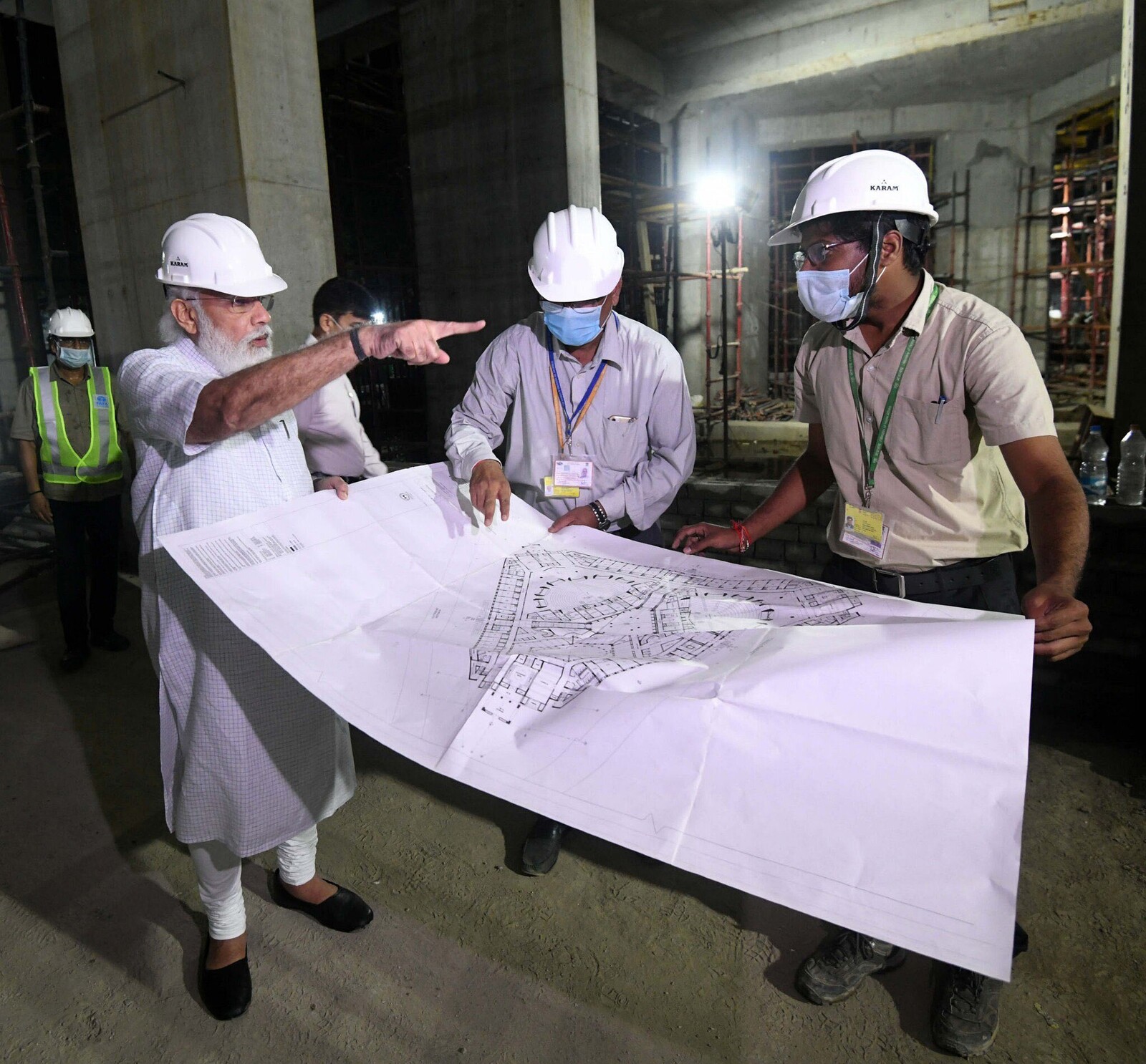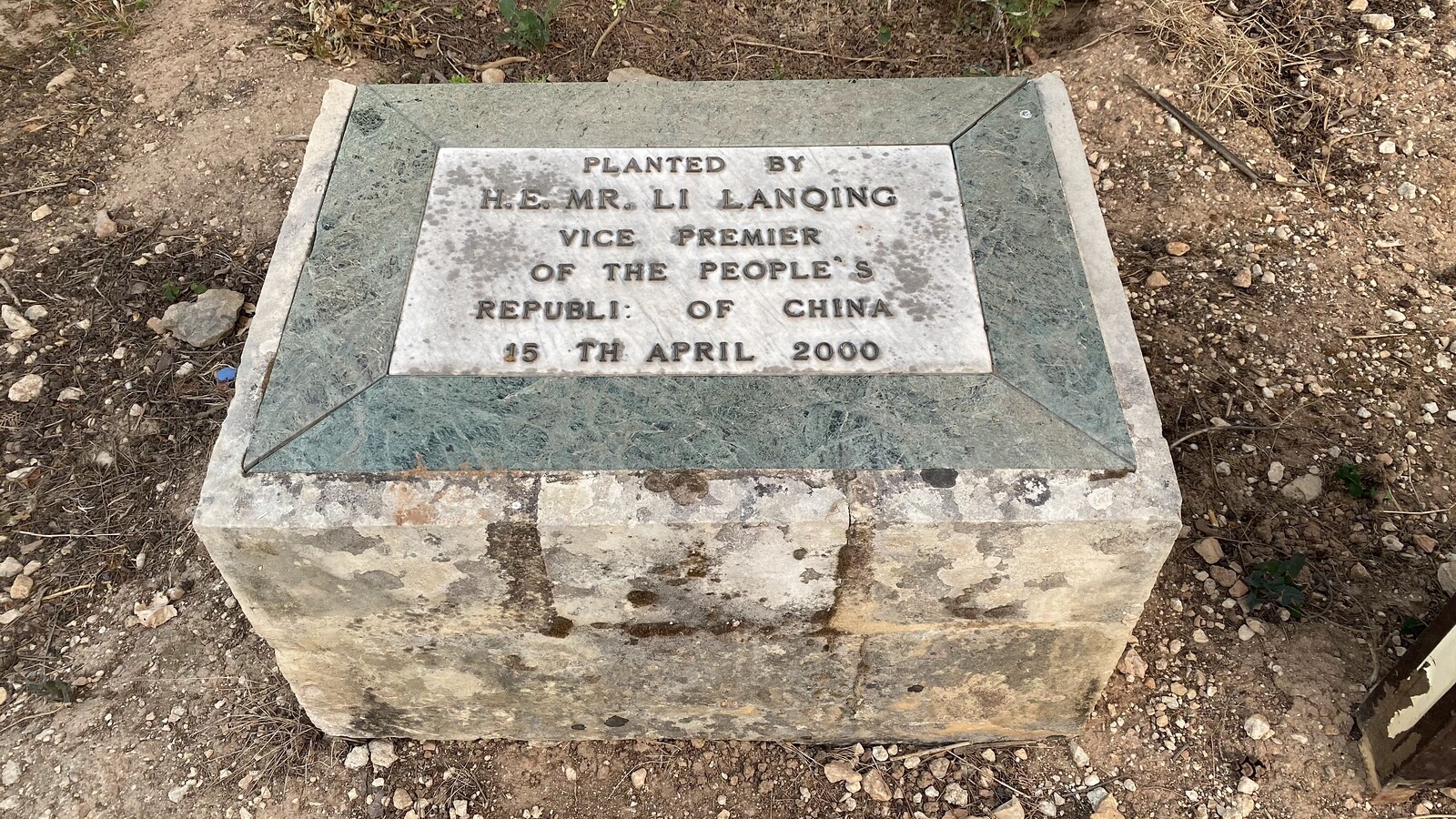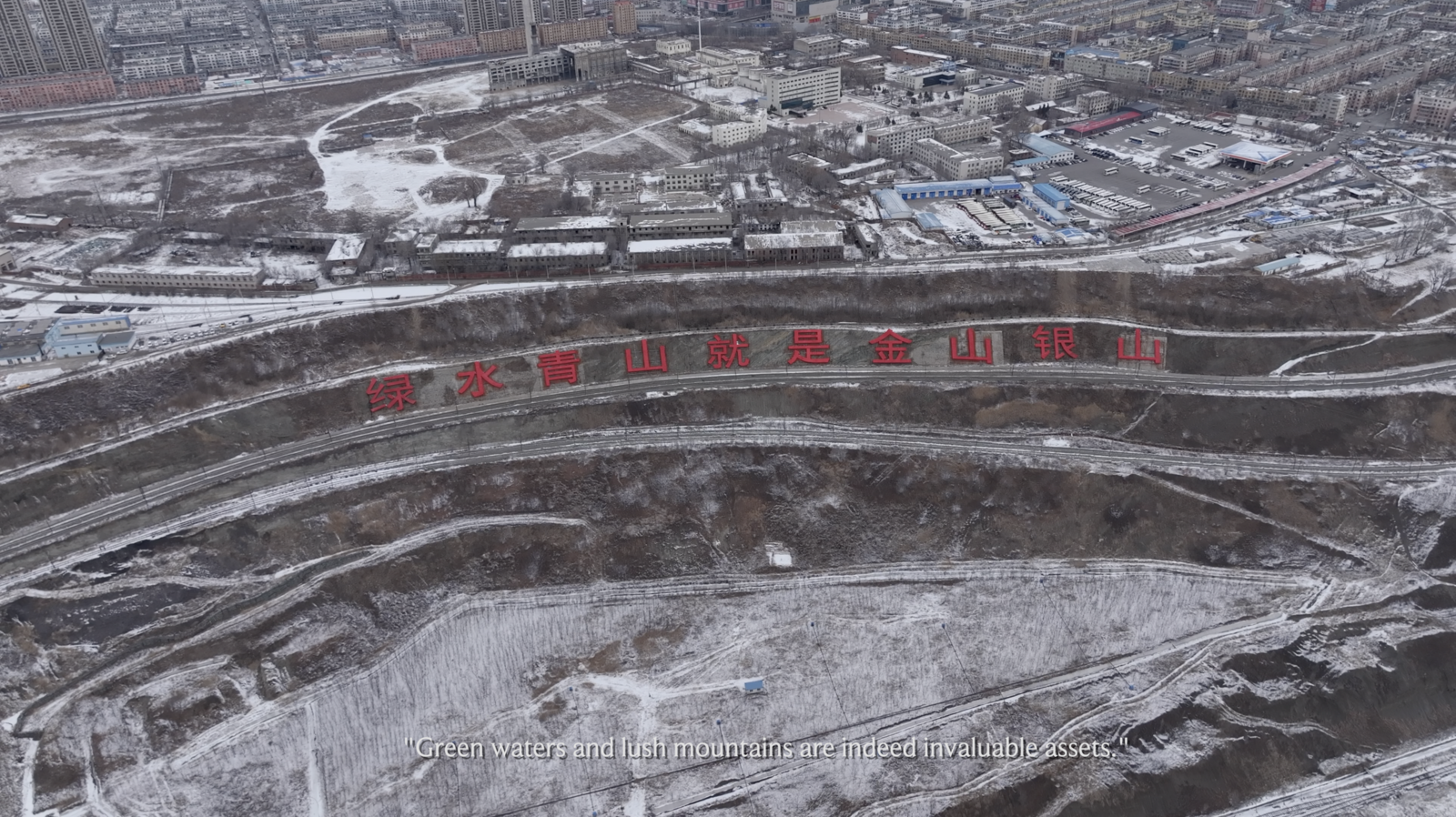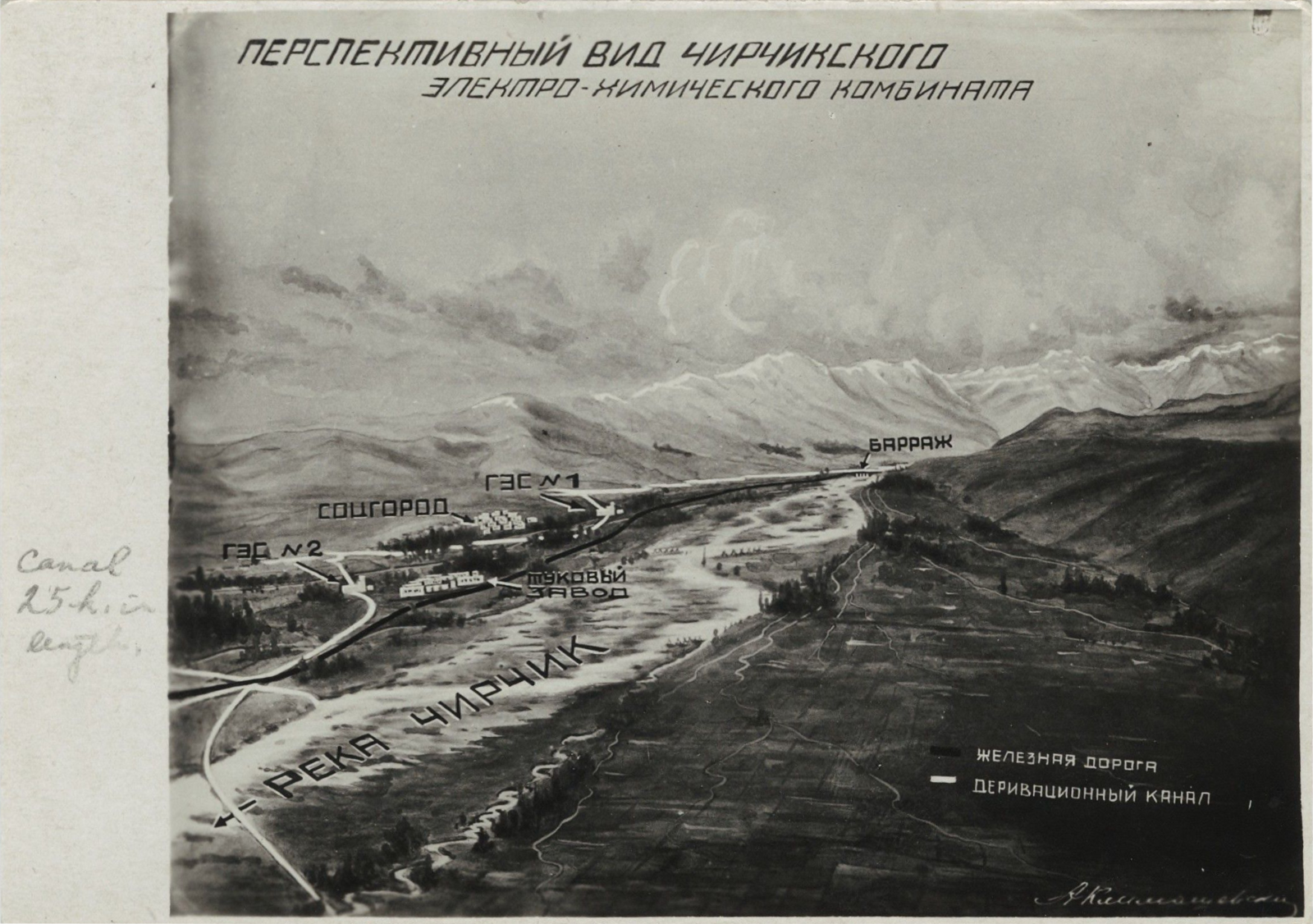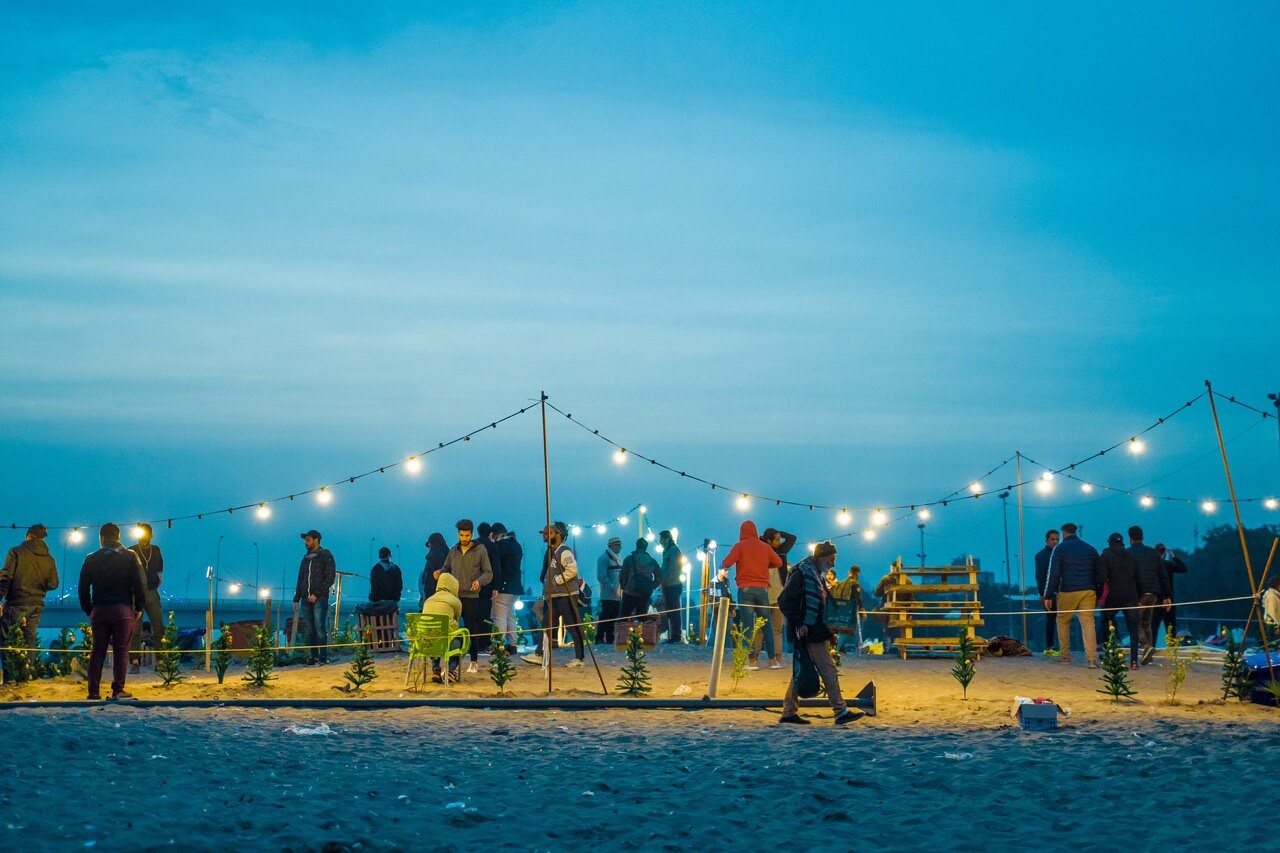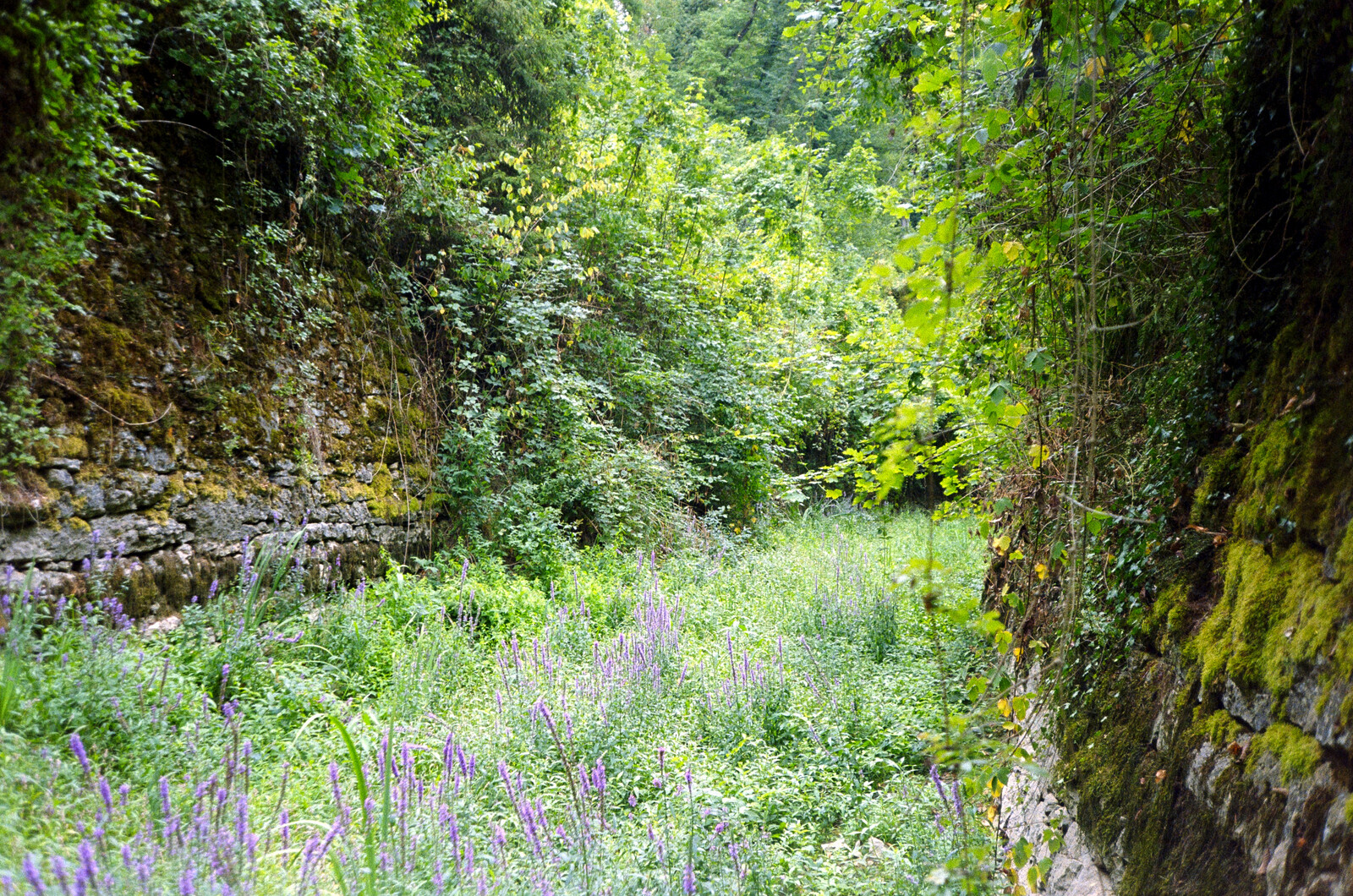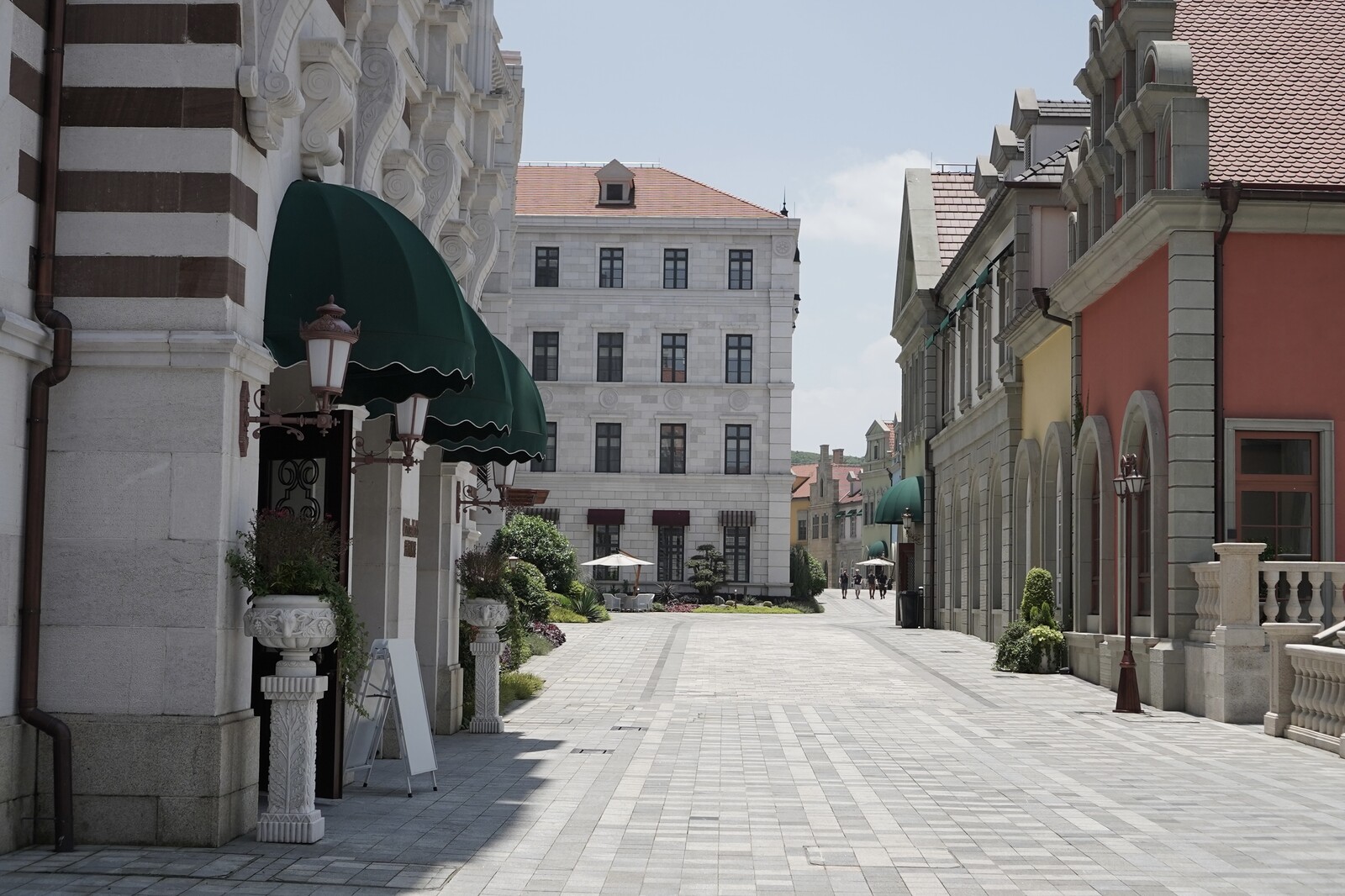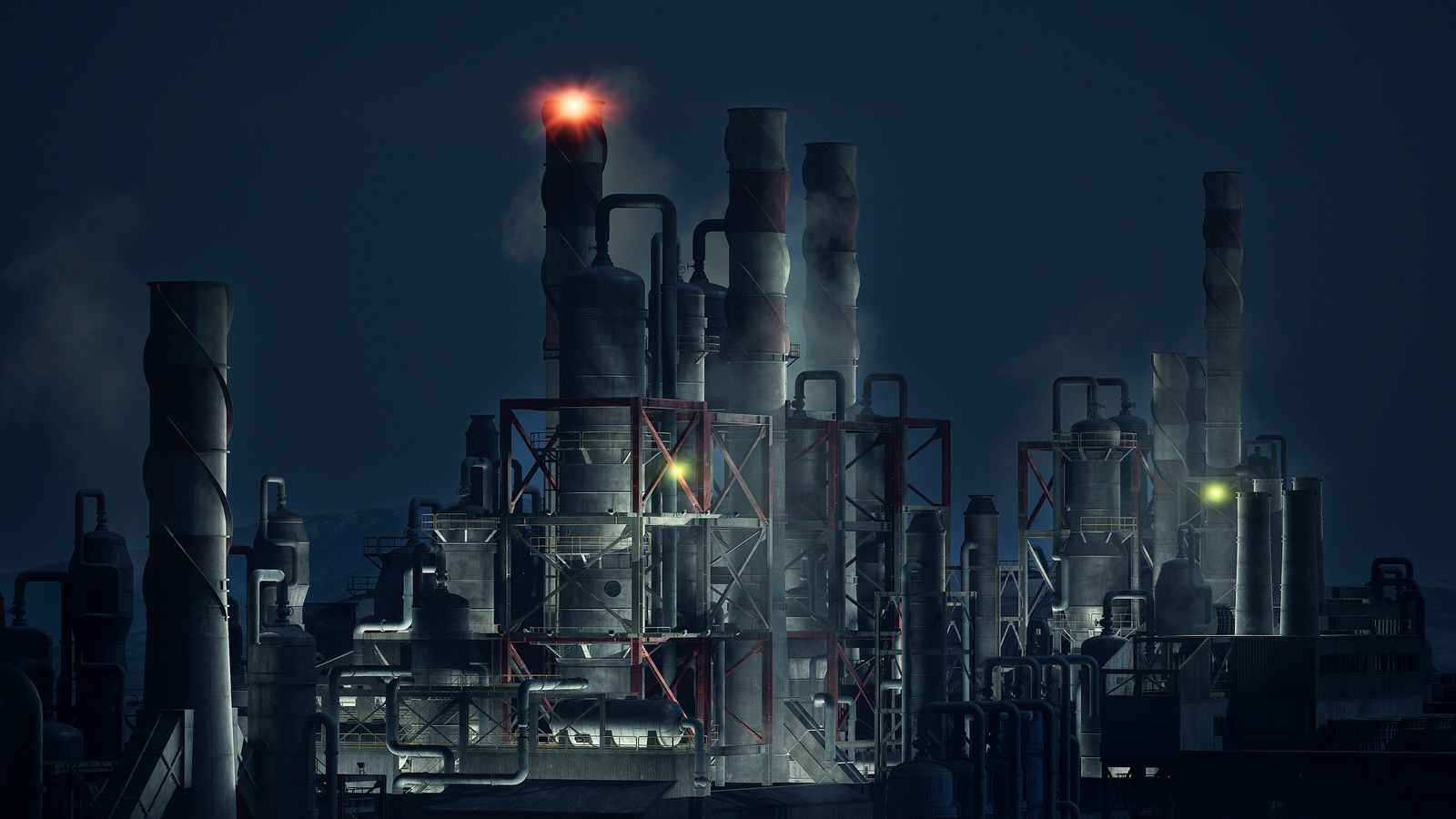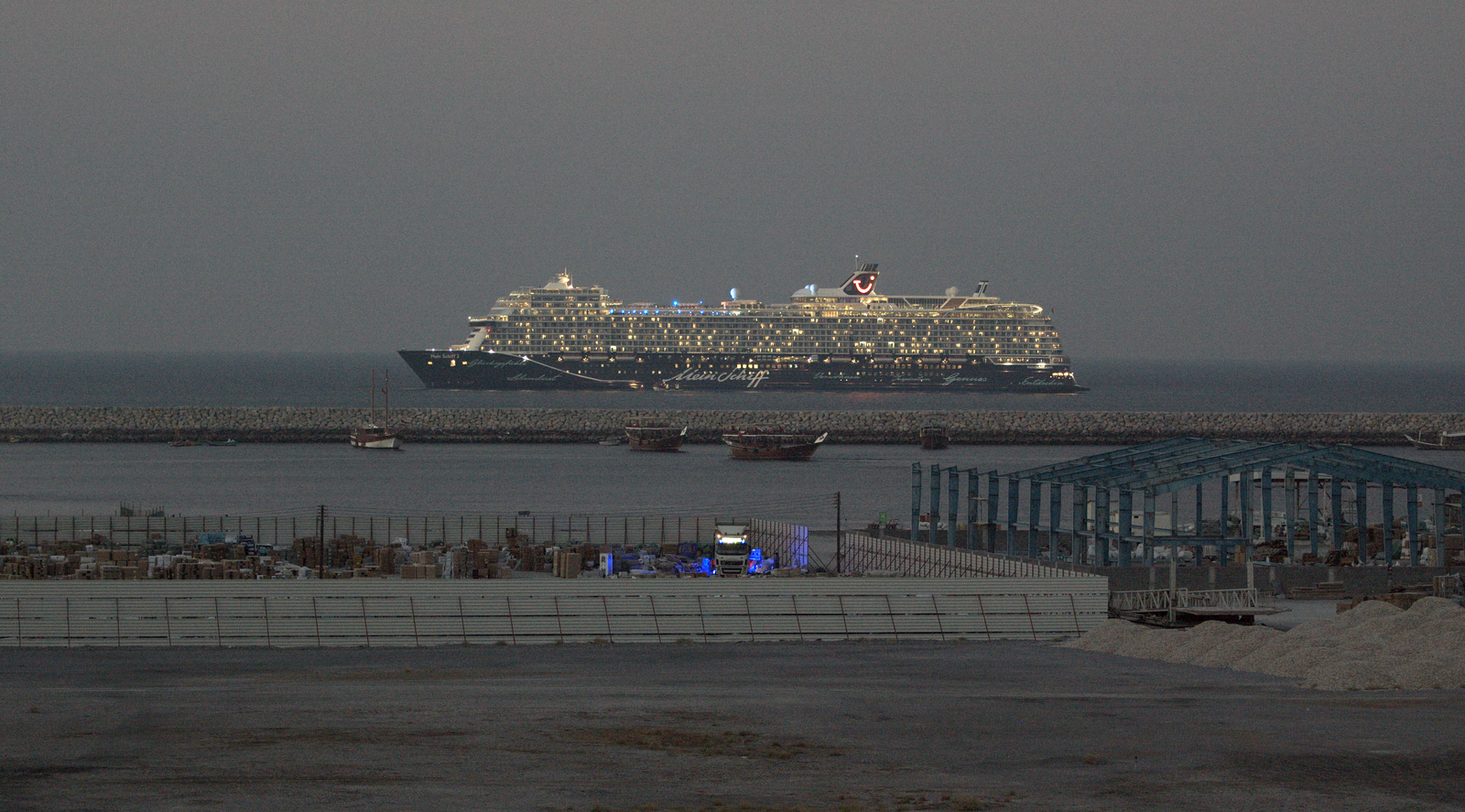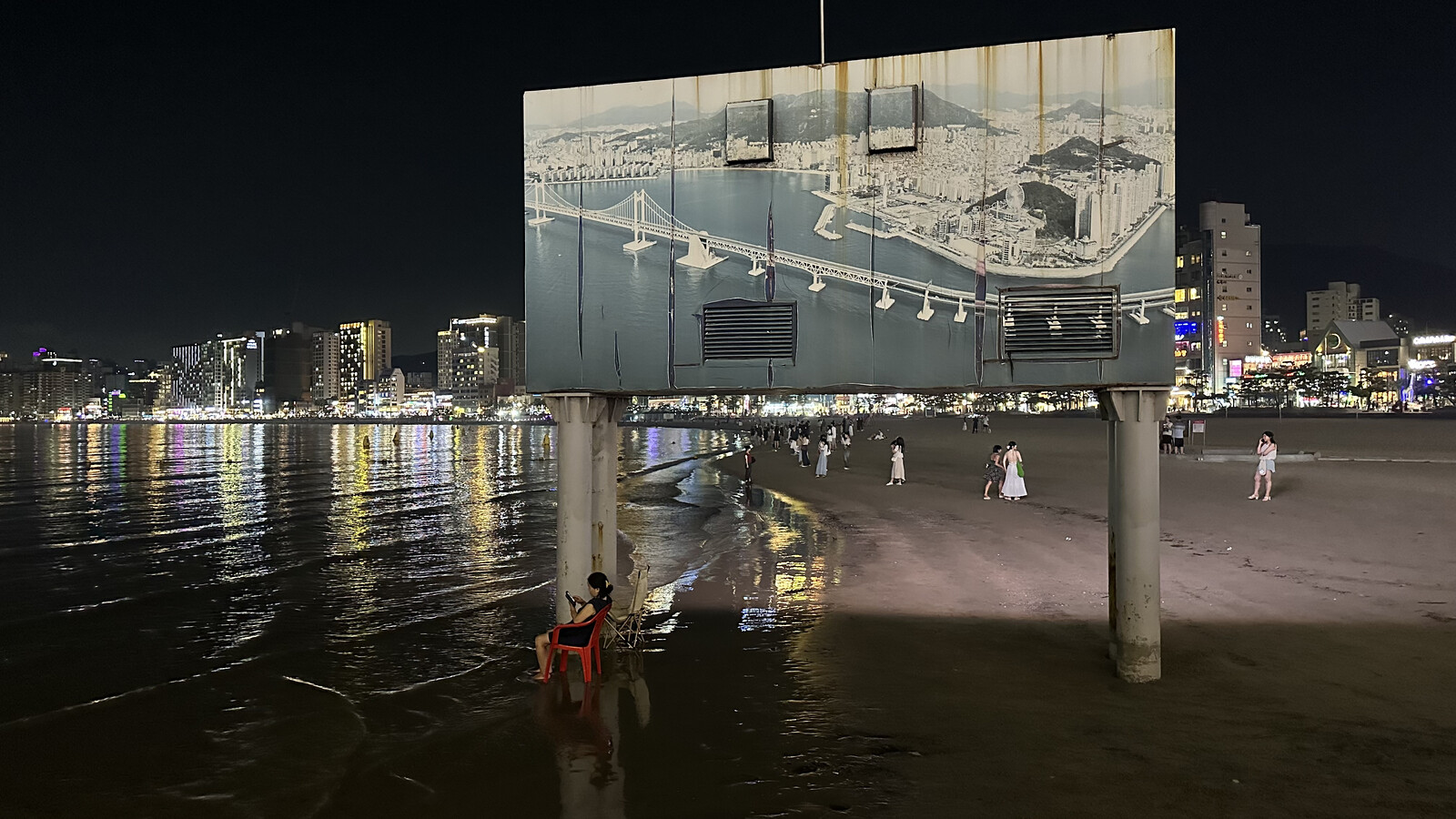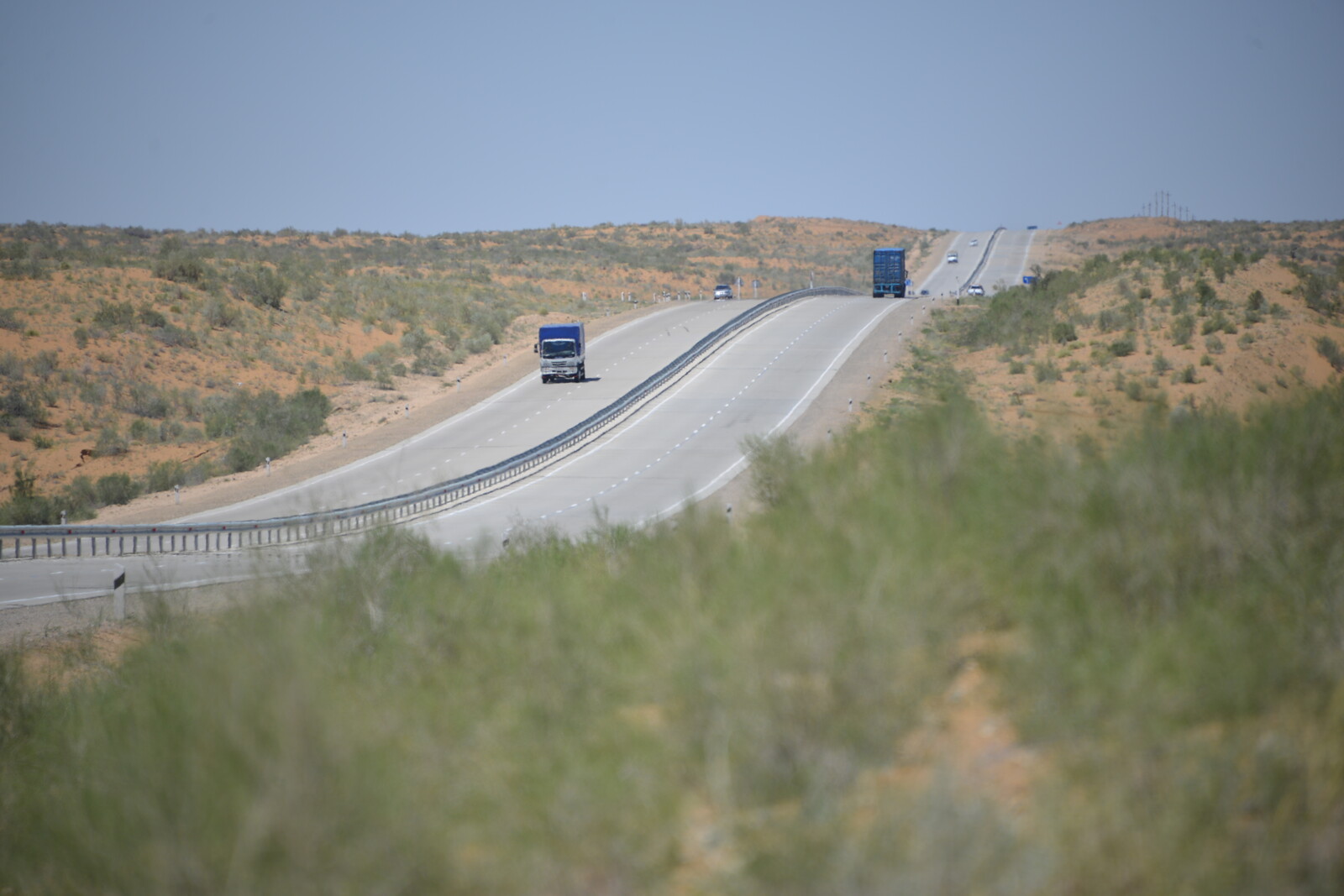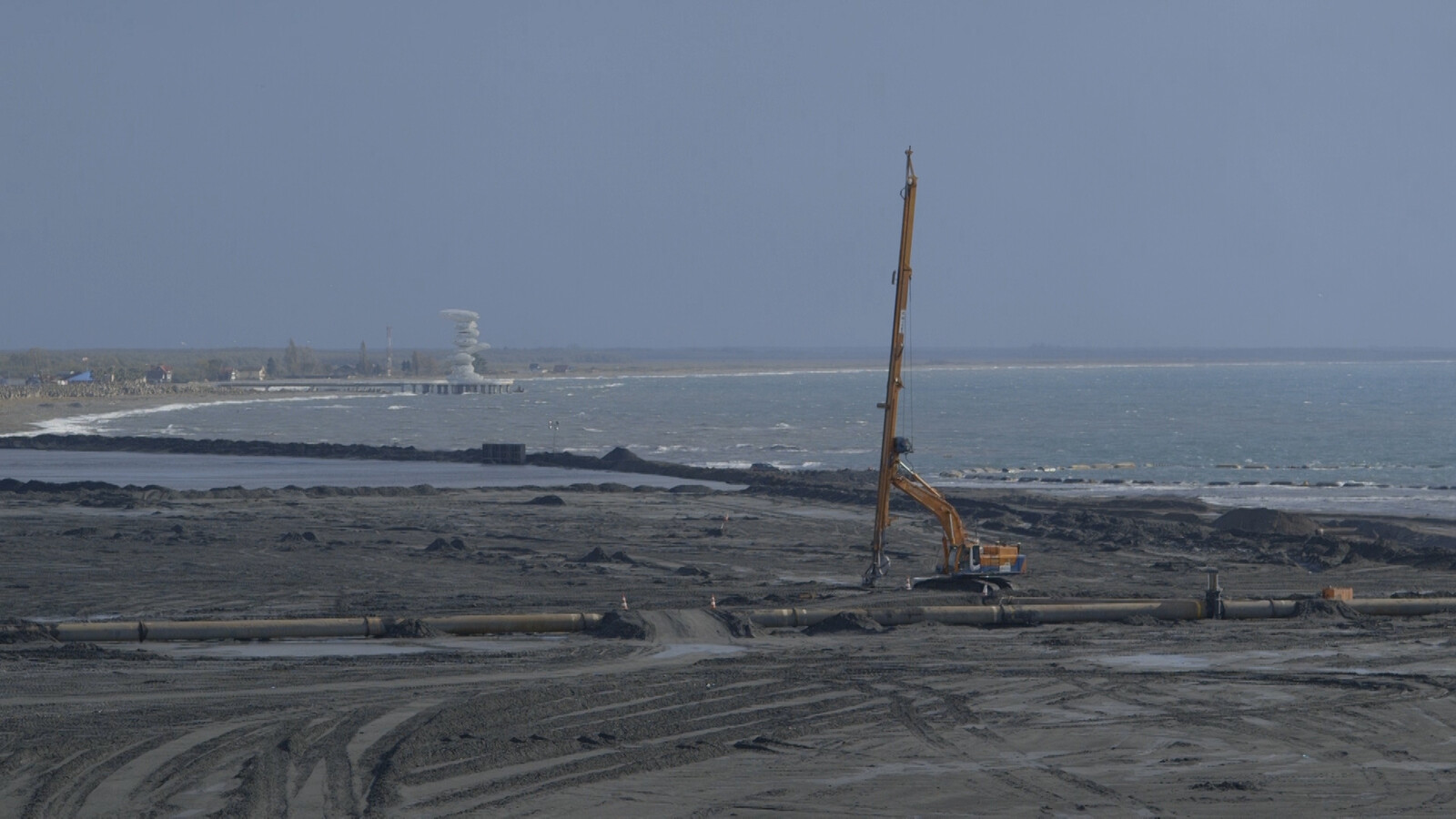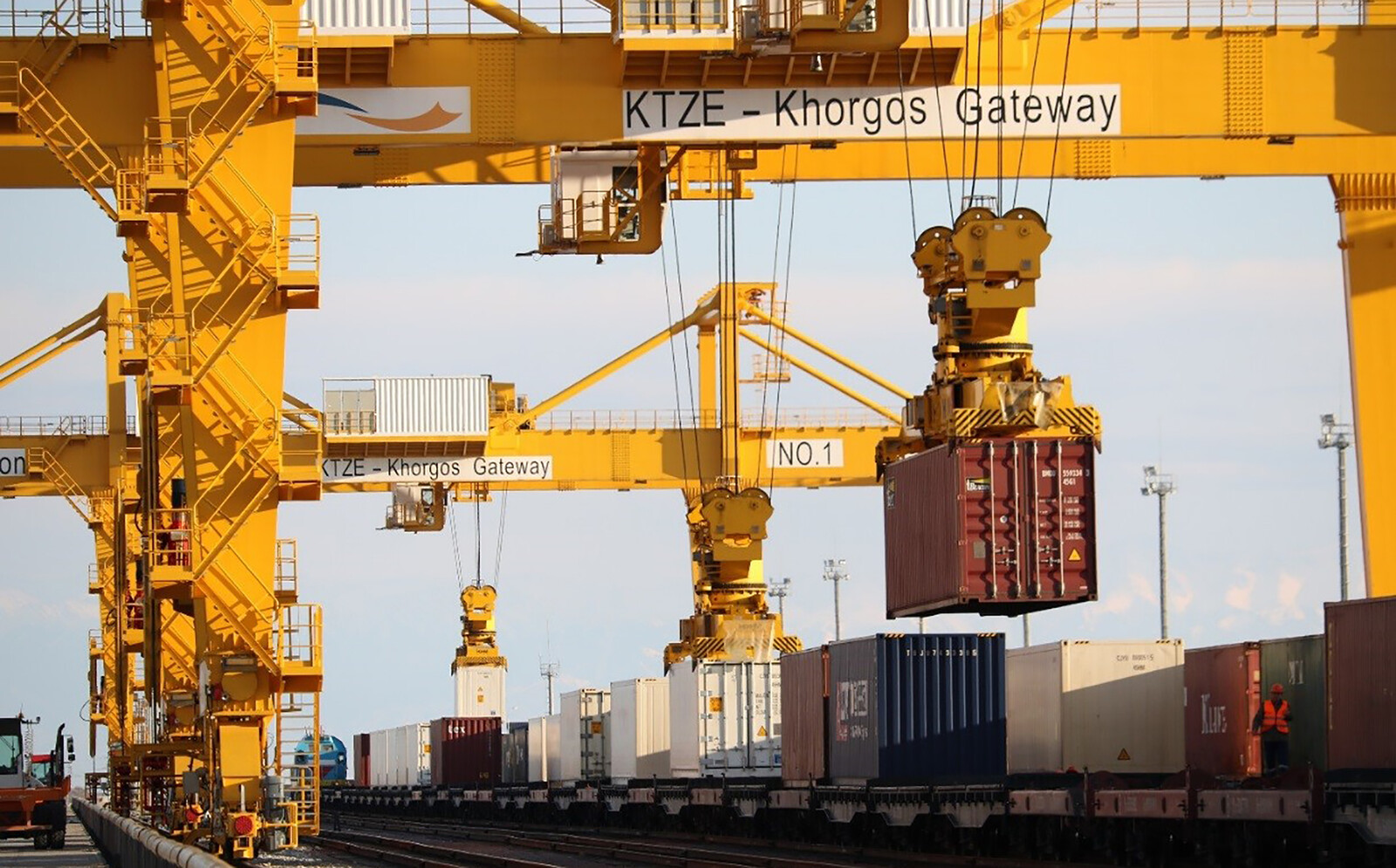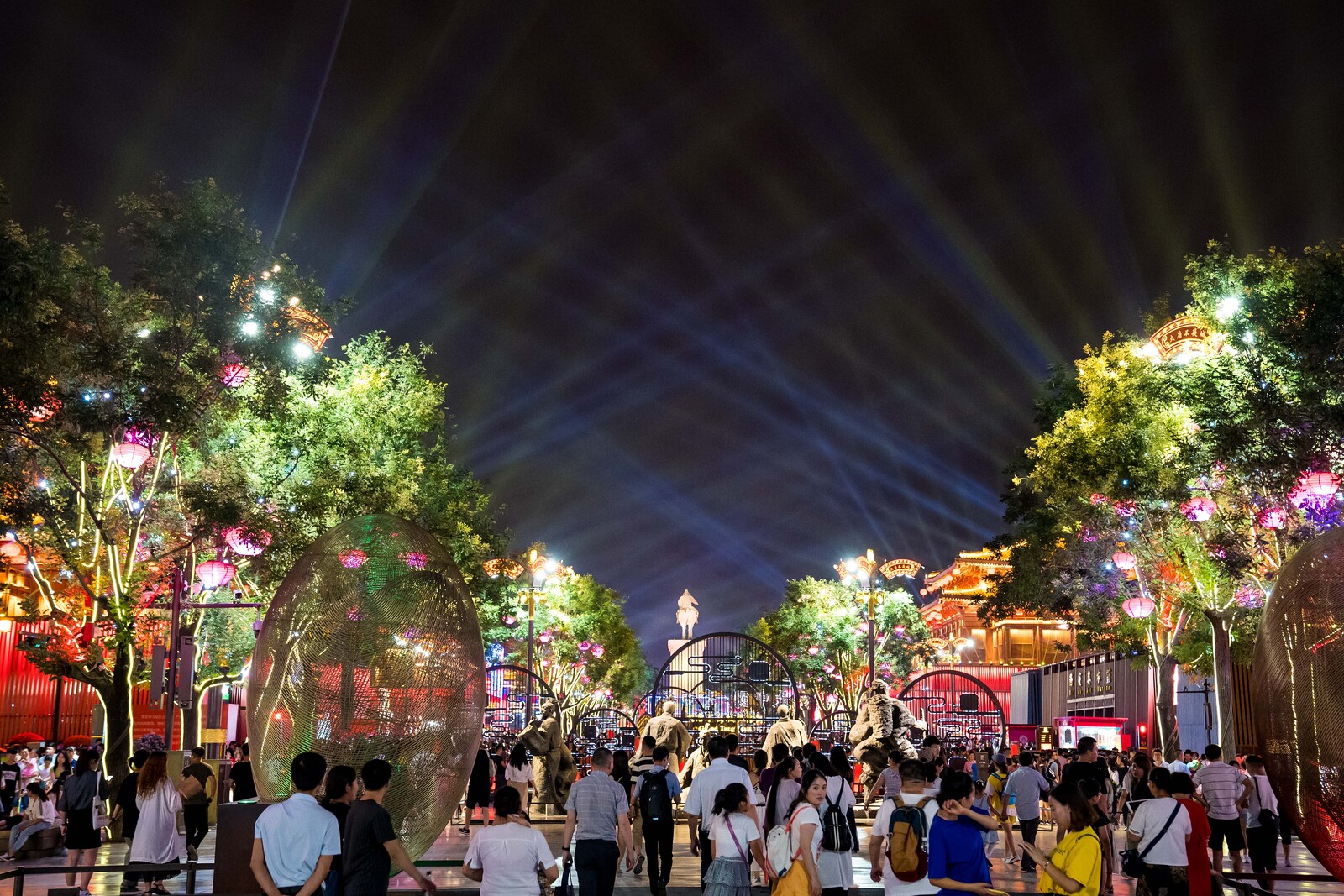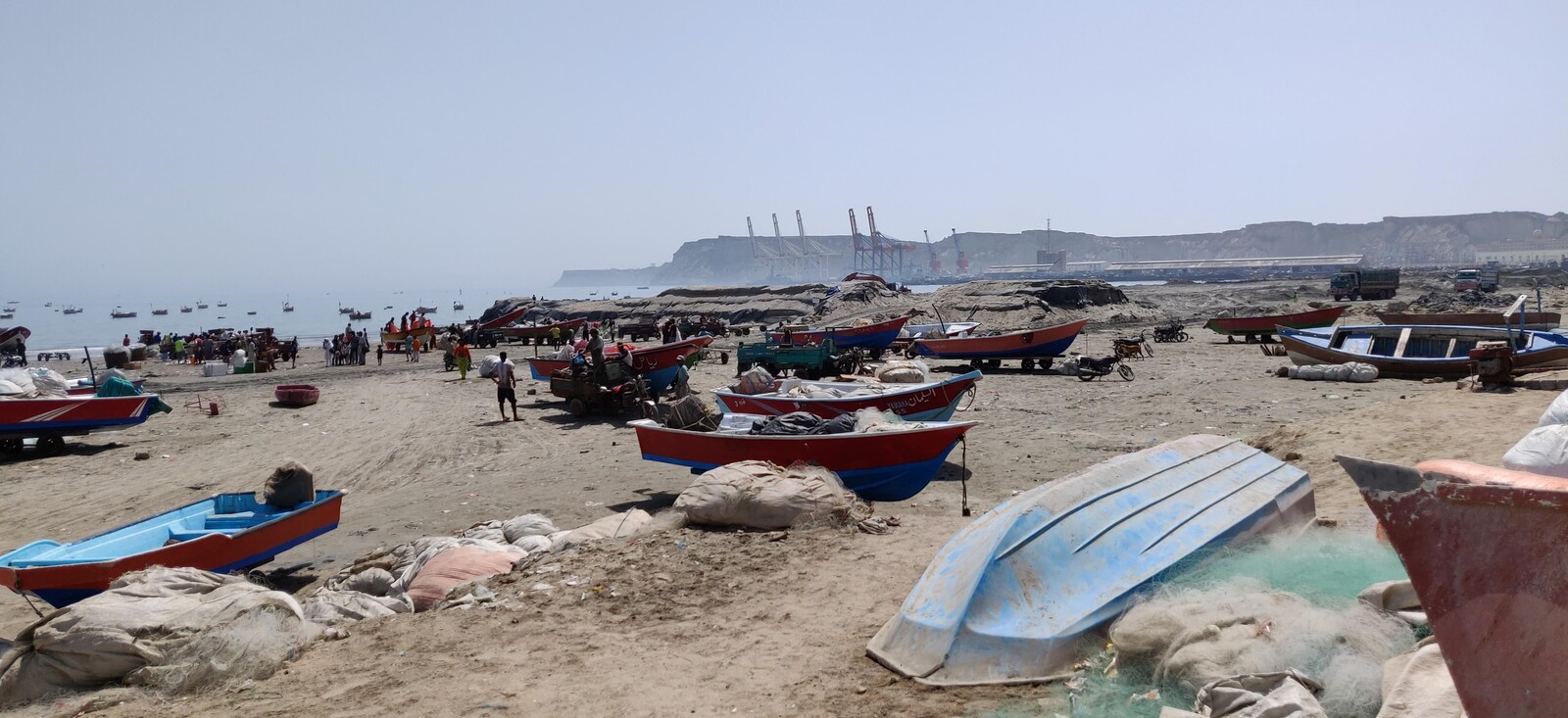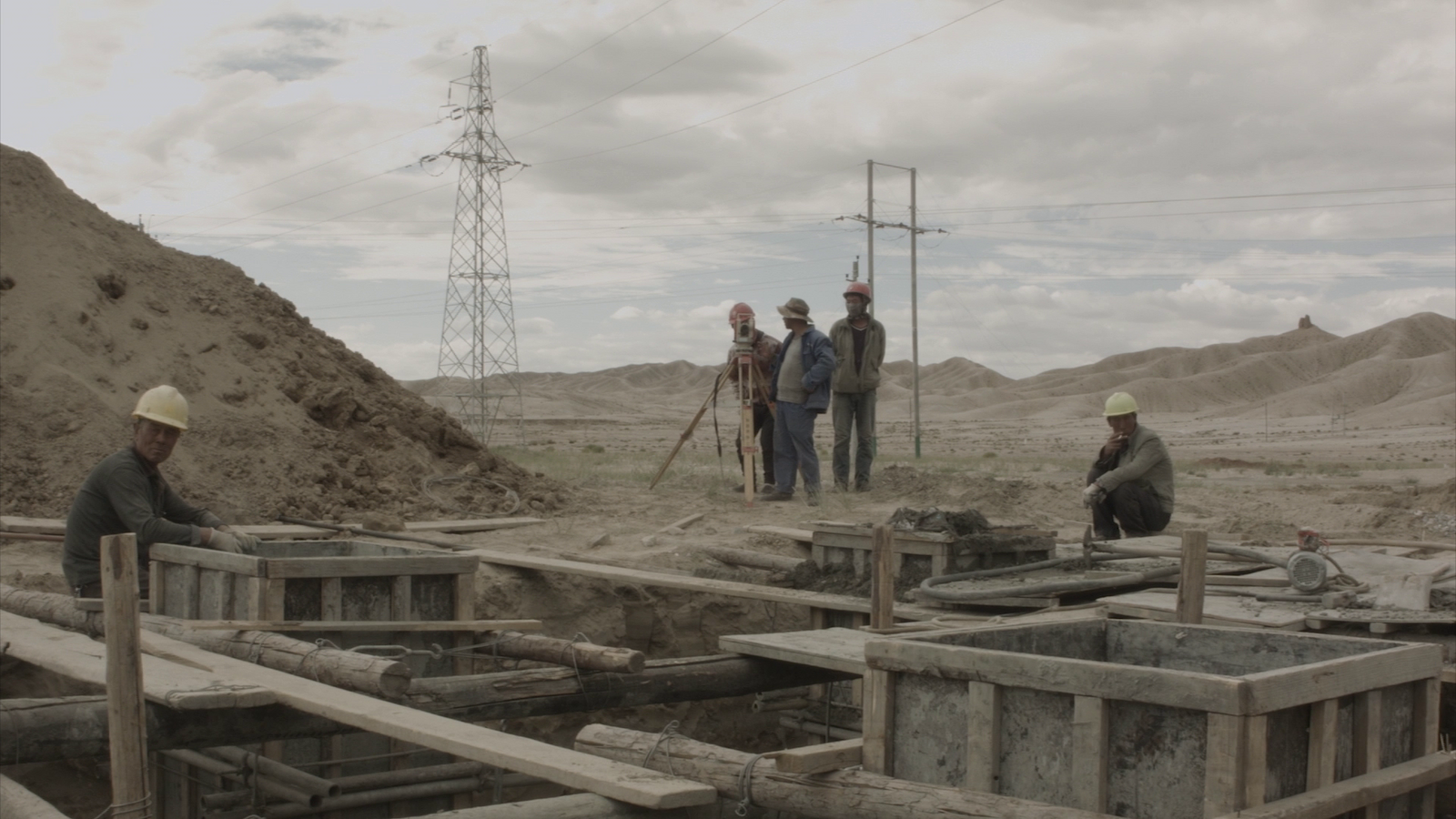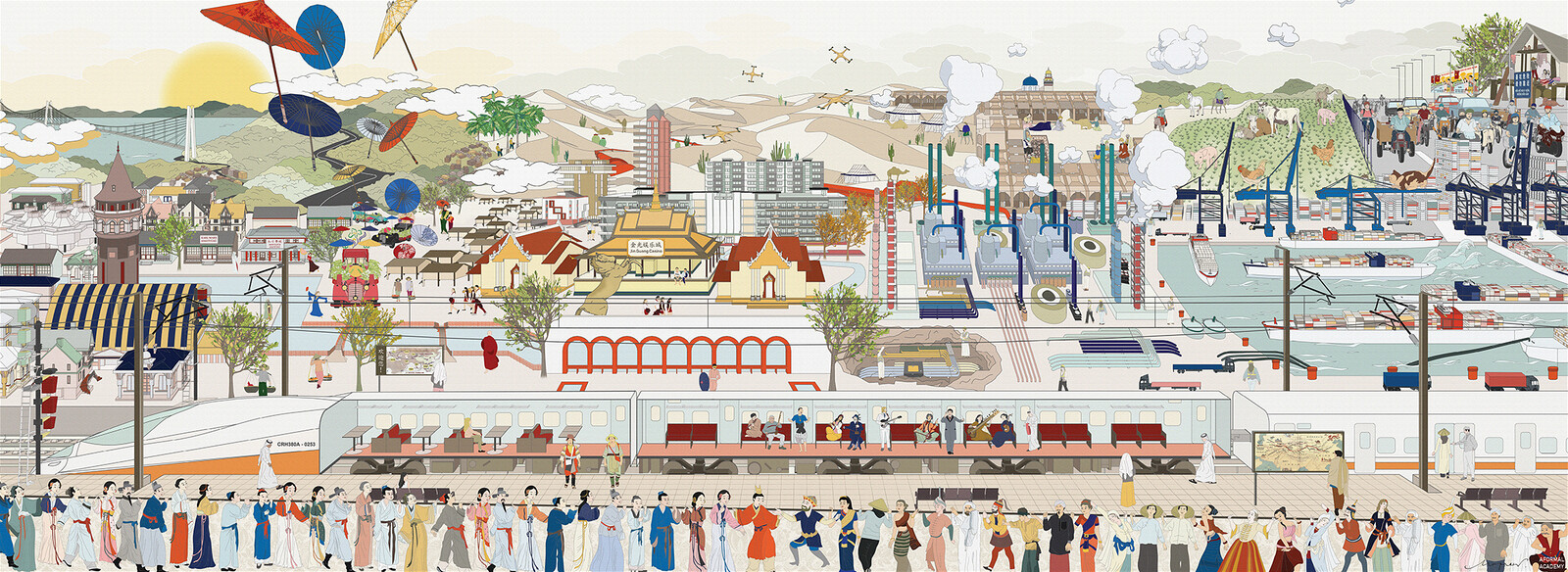India is the world’s largest and oldest democracy. Even as we speak, there is a yagya (a sacrificial act) that is underway to construct the temple of democracy.1
—India Today Conclave
A new Master Plan is to be drawn up for the entire Central Vista area that represents the values and aspirations of a New India—Good Governance, Efficiency, Transparency, Accountability and Equity and is rooted in the Indian Culture and social milieu.2
—Central Public Works department
Hours after he got off the plane from a five-day trip to the USA in September 2021, a hard-hatted Narendra Modi visited the Central Vista Redevelopment. A vast program of demolition and construction currently underway in the heart of New Delhi, the redevelopment includes, among other projects, a new parliament building, ten hulking offices for the government, and houses for top political leaders. The prime minister’s late-night site visit was reported as “unannounced,” and he supposedly went unaccompanied by his security detail.3 Widely circulated photographs dramatize Modi, site plan in hand, pointing boldly into the distance, as a visionary architect.
Just a few weeks later, at the India Today Conclave—a yearly thought platform organized by one of the biggest media houses in the country—the redevelopment’s chief architect, Bimal Patel, conversed with the Minister for Housing and Urban Affairs, Hardeep Singh Puri, whose ministry is overseeing the project. The event’s hyperbolic introduction combined the self-congratulatory postcolonial trope of India as the “world’s largest democracy” with the epic Sanskrit of Hindu mythology, making an oblique link between the redevelopment and the project of Hindu nationalism. The suffusion of state and society with the language and iconography of a mythic Hindu past has been a signature of Modi’s Hindu nationalist Bharatiya Janata Party (BJP) since it came to power in 2014.4 This politics has fueled a spate of violence against Muslims and other minorities and marked a move away from postcolonial India’s official, though ever shaky, commitments to secularism.5 Within this context, the Central Vista Redevelopment represents a high point in the expansion of Modi’s power, and a symbol of a ruling party determined to make a mark in concrete and steel in the center of the national capital.
Even though both its supporters and detractors connect it to Hindutva—the political ideology of Hindu nationalism—the architecture itself disavows this link.6 Rather than mobilizing Hindu symbolism, the new buildings’ facades attempt to blend in with the existing, hybridized, colonial, Raj-era architecture of New Delhi. Instead of using Hindu spatial configurations, Patel draws inspiration from airports in places like Singapore and Dubai, which are designed to maximize security and the efficient circulation of bodies.7 According to Patel, who has been called “Modi’s favorite architect,” the redevelopment is not a symbol of Hindutva, nor is it a “temple of democracy”—a phrase too telling in its clumsy synthesis—but instead “an icon for governance.”8
Two hegemonic architectural projects—two programs of reform—coexist in India today.9 A new religious architecture, typified by the Ram Janmabhoomi Mandir—the bombastic megatemple that the prime minister consecrated in Ayodhya in January 2024—supplies the aesthetic component of a political, legal, and civilizational project to remake India as a Hindu state.10 The technocratic architecture of the Central Vista Redevelopment, by contrast, is part of a rapidly growing infrastructure of expressways and high-speed railways, airports, offices, and convention centers that is rewiring the flow of people, resources, and capital around the country in the name of economic development. Under the leitmotif of the digital, such projects entrench state impunity while facilitating an upward transfer of wealth. Summed up by Modi’s catchy slogan “maximum governance, minimum government,” they are radically restructuring the Indian state as we knew it.
In the political aesthetics crystallized in the Central Vista Redevelopment, the technocratic agenda of “governance” offers an alternate register for politics that can be toggled on and off as necessary. Following the 2024 general election, a decade of single-party rule has been replaced by a multiparty coalition government, with the BJP still at the helm. While the election results have been hailed as a shift in India’s political terrain, with many opposition politicians rejecting the divisiveness of Hindu nationalism, the desirability of apparently apolitical virtues like efficiency and productivity remains largely unchallenged.11 Despite the apparent separation of these projects, technocracy and Hindutva operate in tandem and continually threaten to leak into one another. “Maximum governance” enables managerially-oriented architects, software engineers, the Indian corporate elite, and the international community to maintain a calculated innocence while collaborating with nationalist power in India today.12
The Project
The Objectives of Central Vista Development/Redevelopment Master Plan include upgrading Parliament’s space and facilities, consolidating, rationalizing and synergizing government functioning, refurbishing and better equipping the Central Vista Avenue, strengthening cultural institutions in the Central Vista, providing adequate facilities for the Vice President and the Prime Minister, commemorating 75 years of India’s independence and above all showcasing strength and resolve of New India after Independence to execute an historic national project in 6 years. In this endeavor, the Guiding Principles of the Centra Vista Plan include conservation of Heritage, expanding public space, ensuring Transit Oriented Development, construction of accessible, energy efficient and green buildings with state-of-art construction technology and efficient management practices, thereby create [sic] inspiring work spaces with modern technology & facilities.13
—Ministry of Housing and Urban Affairs
When complete, Central Vista Redevelopment will reorder the administrative and legislative heart of the Indian nation-state. The project involves demolition and new construction along the Central Vista, a two-kilometer-long ceremonial axis connecting Rashtrapati Bhavan (the President’s Palace) and the triumphal arch of India Gate. Initially built at the height of the British Raj under the direction of Edwin Lutyens, the site was later appropriated by the postcolonial nation-state.14 As part of the US$2 billion project, several older office buildings have been demolished and new offices are being built for over 50,000 government workers in the new Common Central Secretariat. The North and South Blocks, two imposing edifices that flank Rashtrapati Bhavan and that currently serve as government offices, will be turned into museums. Both the National Museum and the National Archives, which are already located along the Central Vista, will move all their objects and collections into new premises.15 The prime minister and vice president will also both receive palatial new homes.
The project is proceeding at breakneck speed, often invoked as a hallmark of the New India. A limited design competition was announced by the government in September 2019 and, just a month later, after a process that was widely criticized by the architecture community for its lack of transparency, Bimal Patel’s Gujarat-based architecture and planning firm HCP was announced as the winner.16 Ground broke in January 2021, before much of the design was complete. Work on the project was designated as an essential service during the second wave of the Covid pandemic, allowing construction to proceed despite a draconian lockdown and millions of deaths. The landscaping of the central avenue was completed in September 2022, and the new parliament building was inaugurated in May 2023 amid boycotts by opposition parties. Construction on the Common Central Secretariat began in 2022, and the first new buildings are scheduled to open in December 2024.


Screenshot of Bimal Patel’s “Transforming Central Vista” lecture (CEPT University, January 24, 2020), in which he visualizes the move from the “present scatter of inadequate offices” to purpose-built structures as linearly increasing both efficiency and productivity.
Serious Business
Improving productivity and efficiency by building a new secretariat is the key objective of this project … it’s not to build buildings but that’s the larger level objective … this is not the glamorous part of architecture, but it’s serious business.17
—Bimal Patel
The Indian state is often portrayed by elites—and by the BJP under Modi—as corrupt, inefficient, and unproductive. Patel’s plan for the Common Central Secretariat promises an architectural solution to this problem. It combines the architecture of airports, calibrated to maximize circulation and security, with the ideals of productive office spaces, where design carries the promise of increasing worker efficiency. The ten new buildings of the Common Central Secretariat will replace offices in the North and South Blocks and in various buildings from the 1950s and ‘60s that serve as a thorny reminder of the decades of the planned economy. Other offices whose workforces are being relocated to the Secretariat are scattered around New Delhi. Each of the ten buildings will have a floor area of over 400,000 square meters.18
Like airports in Singapore and Dubai, the Secretariat buildings will be connected by a dedicated underground “people carrier.” The circulation within the buildings will be “simple and straightforward,” unlike the mazelike setup of existing government buildings.19 Patel’s main reference, to which he repeatedly returns, is the 1997 book by British architect Francis Duffy, The New Office, a how-to manual for managerially-oriented architects. Swinging from analyses of Edward Hopper paintings to innovations in cable management, the case studies in Duffy’s book are primarily glass office buildings belonging to Japanese and American multinational firms. These offices eschew the “hierarchy of space and furniture related to status” in favor of “multiple shared group work and individual task-based settings … [that are] geared to work process and its tasks.” Their design logic is based on “dens,” “clubs,” “hives,” and “cells.”20
These spaces epitomize what sociologist Manuel Castells has described as a shift “from vertical bureaucracy to horizontal organization.”21 For Castells, who was one of Patel’s teachers at the University of California, Berkeley, the network society is an ambivalent diagnosis of the state of affairs under neoliberal globalization. Patel appears to have transformed Castells’s descriptions into prescriptions for how space should be organized. In the time of maximum governance, architecture’s modernist promise of reforming subjects through spatial reconfiguration is taken up to remake the state in the image of the corporation. The goal is innovation, now a guiding principle not only for private entrepreneurs seeking to maximize profits but also for civil servants responsible for their agencies’ bottom lines.22


Site plan of new Secretariat buildings, presented by Bimal Patel in his “Transforming Central Vista” lecture (CEPT University, January 24, 2020), screenshot.
A Bureaucratic Counterenvironment
As they are transformed into efficient and productive knowledge workers, the users of the new Secretariat will be increasingly cut off from the territory they govern. This is a marked shift from what came before. Historian Narayani Gupta evocatively describes the informal urban economy that supported the old Central Vista buildings as follows:
The Indian Champs Elysees is coming to life in a way very different from what Lutyens intended. Foodstalls and eateries are normal ancillary developments whenever an office complex is built. The architectural snobbery of the Secretariats is maintained by banishing all these stalls from the facade and allowing them to proliferate at the rear. The Bhavans are hemmed in by these, as well as by innumerable vendors enticing the officegoers with temptations, mounds of handkerchiefs, shiny pens, wallets, aphrodisiacs. In recent years the items aimed at women have increased, with arrays of atomizers and handbags. Thus a sizable area of the Vista is a miniature bazaar …23
If the old government buildings had a severe front that faced the grand Central Vista, their backs were hives of informal activity. This informality is to be done away with altogether by Patel, who speaks with horror of “ad hoc vending.”24 The new Secretariat buildings will be surrounded on all sides by a moat of approach roads and high-security perimeter walls. Organized around large central courtyards, the new buildings will be characterized by relations between inside and outside rather than front and back. Mimicking Lutyens’s architecture, all four faces of each building will take on an austere sandstone cladding, perforated by small louvered windows. The courtyard-facing walls, however, will be covered in floor-to-ceiling glass, offering views of the tree-canopied courtyard. In effect, the external face will retain a conservative governmental façade, while the internal one will perform the architecture of high-tech management.25
These “doughnut-shaped buildings,” as Patel describes them, may appear at first glance to channel the Indian subcontinent’s long history of courtyard houses.26 In such houses, according to Charles Correa, one of their foremost proponents, “the boundaries … between room and verandah and terrace and courtyard … are blurred and casual, so that one passes easily from one to the other.”27 In contrast to these climate-appropriate, “open-to-sky” buildings, the climate-controlled Secretariat more closely resembles the “closed box” typology Correa railed against. In fact, Patel’s doughnuts are an uncanny echo of the buildings designed for IBM by midcentury American architect and designer Eliot Noyes, which he called “squared doughnuts.”28
Architecture historian John Harwood characterizes Noyes’s IBM buildings as “courtyard-fortress architecture.” According to Harwood, the hard externality and inward orientation renders each of the multinational corporation’s buildings a “counterenvironment,” or, “an enclosure organized over and against the surrounding, disorganized environment.”29 In India, where informal bazaars typically cluster around office buildings, the high-modernist desire to keep the chaotic outside is even stronger than it must have been for Noyes in suburban New York. According to Harwood, the courtyard-fortress form is “a large-scale realization of the computer,” a carefully managed space, segmented off from the territory that surrounds it yet connected to the world beyond through underground cables and satellite infrastructure.30
Just as IBM’s architecture expressed the corporation’s ambitions of global, interconnected data-processing, the design of the Secretariat buildings sublimates the aspirations of—to use another Modi slogan—“Digital India.” With the proliferation of databases, dashboards, and biometric identifiers, the Indian state’s relations with its people and territory are being dramatically digitized. Governmental services can now be accessed through smartphones, but those seeking redress find the government itself increasingly inaccessible—a condition that is only reinforced by the buildings’ impenetrable facades, which relate to the city only as a ceremonial surface. The possibility of direct, face-to-face interactions, where one might walk into a government building and speak with a public employee, is foreclosed. Even public employees themselves are becoming an endangered species, as their work becomes increasingly transferred to private contractors who sacrifice labor rights in the name of efficiency.31 Like information carried through cables, the bureaucrats that remain are remade into innovating knowledge workers who travel through underground pipes, entering and exiting the buildings from below. Everything will take place instantly and out of sight. In the hermetically networked Secretariat buildings, dreams of maximum governance find their architectural form at the cost of accountability and democracy.
Hindu Managerialism, or the Lenticulation of the Image
With his grey hair, thick-rimmed glasses and black shirt, Bimal Patel plays the consummate architect-as-managerial professional. Despite his style of placeless globalism, Patel’s regional, religious, and caste ties root him in the communal politics that define contemporary India. Public administration scholar Navdeep Mathur points out that Patel’s membership in one of Gujarat’s dominant castes facilitated his selection as the consultant on a previous Modi megaproject, the Sabarmati Riverfront Redevelopment, which has been reshaping the center of Ahmedabad since 2005.32 Patel is one among many Gujaratis whose careers have followed Modi’s ascent from Gujarat to Delhi. Even as he hawks an apolitical governance that appears to be a world away from religious politics, his caste credentials are a key determinant of his state patronage. Patel is at his most skillful when mediating between these two seemingly distinct worlds.


Slide presented by Bimal Patel in his “Transforming Central Vista” lecture (CEPT University, January 24, 2020), screenshot.
In a January 2020 presentation on the Central Vista Redevelopment—delivered at the Center for Environmental Planning and Technology (CEPT), the architecture school where he was president at the time—Patel discusses the “forms and symbolism” of the new parliament building. He is less enthusiastic than when talking about technology and circulation, even dismissive. “Some people ask me ‘why a triangle?,’” he says, in relation to the building’s footprint. “I say the plot is triangular … this, that,” he responds to his imagined interlocutor. But “it doesn’t help.” The explanation isn’t accepted. Exasperated, Patel changes tack: “Well, you know, it’s a sacred geometry, triangles and trinities.” Examples of triadic sacred geometries appear on the slide behind him. Two of them, a Sri Yantra diagram and rock carvings of Hindu gods, are explicitly Hindu. A third image, of a traditional jali or latticed screen, is labelled simply “jali patterns.” Patel points at it. “In case you’re worried,” he says, “that’s Humayun’s Tomb, so …”33 The audience titters as he trails off. Having introduced the religious symbols, Patel’s slideshow superimposes triangles on the parliament building’s plan, suggesting (but never explicitly stating) that the building itself is a sort of yantra, or mystical diagram. His imagined interlocutor is satisfied. But there is a note of scorn in Patel’s voice that elicits more laughs from the audience.
As with many dirty jokes, the humor is in the distance between what is said and what remains unspoken but known to everyone in the room. A translation between two incommensurable cosmologies has taken place in this seemingly insignificant episode. To Patel and the audience of managerially-oriented architects at CEPT, it is utterly obvious that the building’s triangular geometry arises directly from the shape of the site and the need to maximize floorspace. Yet this is unacceptable to his imagined interlocutor, a caricature of a Hindu nationalist who requires a religious explanation. Expressing his exasperation with this imaginary simple-minded Hindu nationalist, Patel gives his audience a momentary glimpse of the world from two perspectives at once. Greasing the wheels with humor, he can reach out to the religious while grounding himself in the managerial. I know this may seem silly, he seems to be saying to his professional community, but it is the cost of power.
Why, however, did Patel slip in Humayun’s Tomb, one of the most important examples of Mughal architecture, built by a dynasty that is regularly attacked by the Hindu right as “Muslim invaders”? As a comment on the YouTube video of the presentation points out, this is a barb directed towards critics from the left. The commenter reads Patel’s “in case you’re worried” as “shade thrown at pseudo-seculars,” a term used by the right to imply that those who claim to be secular are in fact anti-Hindu and pro-Muslim. In this right-wing narrative, it is those on the left who are constantly turning everything into “a Hindu-Muslim issue.” Patel manages to both assuage and dismiss left-liberal critics in the same breath. The audience laughs along. In Patel’s world, the joke’s on everyone who doesn’t accede to a narrow-minded obsession with efficiency and productivity.
Like all pitches, this performance is specific to its context and audience. But we can easily imagine Patel presenting a similar slide deck to an audience of religious nationalists—possibly members of the current government—who don’t share his managerialist convictions. For that imagined audience, the Parliament is triangular because it is a yantra. And we can be sure Patel makes no disparaging jokes.
By modulating exactly how much information is provided—the names of the Hindu references but not the Muslim one—by inserting strategic silences, showing one thing but saying another, using innuendo and double entendre, Patel composes an image of the Central Vista Redevelopment that functions like a lenticular print. Depending on what angle one looks at it from, a different picture appears, mobilizing different fears and desires.
A similar now-you-see-it-now-you-don’t optical illusion is at play in the Kashi Vishwanath Corridor project in Varanasi, another vast government commission that Patel recently completed.34 The project has created a 300-meter-long pathway between the holy bathing ghats on the Ganges and the Kashi Vishwanath Temple in the city, easing access for the millions of devotees who visit each year. The construction of the corridor has expanded the space around the temple from 300 to 48,000 square meters, and has led to the demolition of around 300 houses, fifteen neighborhoods, and several temples.35 Patel describes the existing dense urban fabric as a “congested” space that needs to be cleaned up to make a world class tourist site. But seen from another angle, this technical project of facilitating efficient religious tourism is far more insidious. Varanasi is considered the holiest city in Hinduism. It is also the parliamentary seat from which Modi stands for national elections. As he laid the project’s foundation stone, Modi explained that the pathway would enable the “liberation” of Lord Shiva, the deity of the temple, who had been feeling “suffocated” by the lack of space around the temple.36
Under Modi’s BJP, the image of the New India has become lenticular, folding in on itself and splitting apart at the same time. Both Hindutva and “maximum governance” are savvy strategies of political image-making, coming in and out of focus, projecting silhouettes but not details that could establish culpability. Hindutva draws attention away from the lack of economic growth that Modi has promised—away from the increasing precarity of the poor and the extreme concentration of wealth among a new Billionaire Raj.37 On the other side, maximum governance draws attention away from the BJP’s more rabid politics in favor of a glossy image of world-class technocracy, enabling the party to remain palatable to corporate elites and the global forces of capital from which it craves recognition.38
Just as a change in perspective can confuse governance and Hindutva, so too can the apparently rule-abiding violence of technocratic governance—surveillance, slum evictions, the loosening of environmental and labor regulations—prove fungible with the bloodier and more unruly violence preferred by Hindutva. More is at stake in the clearing of congestion and the liberation of Shiva in Varanasi than meets the eye. In early 2022, Hindu nationalist groups began to call for the violent destruction of the seventeenth-century Gyanvapi Mosque, which shares a boundary wall with the Kashi Vishwanath Temple. Patel’s project, carried out in the name of efficiency and decongestion, may be clearing the way for a repeat of the 1992 demolition of the Babri Masjid by a Hindu mob.39
The redevelopment of Central Vista may not directly lay the groundwork for bloody acts of religious violence, but the lenticulation of the image of the New India makes it easy for BJP supporters, if they are so inclined, to see the technocratic redevelopment project as a symbol of Hindutva, on a continuum with the Ram Janmabhoomi Temple that Modi recently inaugurated in Ayodhya.40 For some of the party’s core constituencies, technocracy and Hindutva are the same endeavor, stitching a digital future to the recovery of lost Hindu pride. But even as violence accelerates, the image of governance splits off from Hindutva, enabling evasive claims that projects like the Central Vista are “merely infrastructural.”41 Hard-hatted, stern of brow, Modi-the-visionary-architect appears to point his finger towards a bright technocratic future. Shift your position and the image transforms: the icon of governance is replaced by another mosque to be razed to the ground.
Hardeep Singh Puri & Bimal Patel, “Central Vista Curtain Raiser: Unveiling Democracy’s New Face (lecture, India Today Conclave, October 9, 2021), ➝.
Central Public Works department, “Notice Inviting Bids from National/International Design & Planning Firms for Consultancy Services for comprehensive Architectural & Engineering planning for the ‘Development/Redevelopment of Parliament Building, Common Central Secretariat and Central Vista at New Delhi’,” (September 2, 2019), ➝.
Gloria Methri, “PM Modi Pays Unannounced Visit to Central Vista Project Site; Takes Stock of Work Underway,” Republic World, September 27, 2021, ➝.
It remains to be seen how and to what extent this will change following the 2024 general elections. The BJP’s single-party rule has been replaced with a multiparty coalition, in which the BJP remains the dominant party, though with a diminished mandate.
For an analysis of the BJP’s tendencies in this direction in an earlier formative moment, in the late 1980s, see Arvind Rajagopal, Politics after Television: Hindu Nationalism and the Reshaping of the Public in India (Cambridge, UK: Cambridge University Press, 2009).
One of the most persistent—and important—strains of criticism against the redevelopment argues that it is a monument not only to Modi but also to Hindutva. Atul Dev, “Modi’s Folly,” New York Review of Books (blog), May 10, 2021, ➝; See also A. G. Krishna Menon, “Behind Modi’s Plans to Redevelop the Central Vista Is a Covert Political Agenda,” The Wire, May 23, 2020, ➝. Critics of the project have also attacked it on other fronts: on account of the number of trees that will be uprooted, for not following zoning regulations, and because the construction was designated “essential” and continued at full pace during the height of the second wave of the Covid-19 pandemic. For a summary of these criticisms see Thomas Oommen and Nipesh Palat Narayanan, “Democracy, Development and Identity: Notes on the Central Vista Project,”Architexturez South Asia, 2020, ➝.
The longer history of the redevelopment, dating to 2002, is animated by Vaastu—or Hindu architectural—concerns that are foundational to the current regime. Kay Benedict, “Is Bad Vaastu Behind Move To Construct A New Parliament Building?,” The Quint, December 31, 2015, ➝.
Seema Sreedharan, “The Master Urbanist,” Architecture + Design, October 1, 2021.
Here, I am drawing on and modifying political theorist Niraja Gopal Jayal’s suggestion that Hindutva and vikas, or progress, are the two major components of Modi’s rule. Niraja Gopal Jayal, “Introduction” in Re-Forming India: The Nation Today, ed. Niraja Gopal Jayal (Gurgaon: Penguin, 2019).
The temple is currently being built on the ruins of a fifteenth-century mosque, the Babri Masjid, which was violently destroyed by a right-wing mob in 1992 in one of the foundational moments of Hindutva’s ascent to power. The construction of a temple on the site, putatively the birthplace of the Hindu god Ram, is being portrayed as a major victory of Modi’s government and as a recovery of damaged Hindu pride. Though it is not officially state architecture—having been constructed by an independent trust—the involvement of the courts, Parliament, and top politicians mean that the Ram Mandir should effectively be considered state architecture.
This “New India” is contrasted with an apparently corrupt, inefficient old India. According to Puri, previous governments have been aware, for example, that the existing parliament building was not earthquake-safe and that it didn’t have enough seating for all the members of parliament. In his slideshows, Patel regularly shows images of dilapidated interiors and poorly touched-up facades to argue for the new constructions. According to them, on account of bureaucratic sluggishness, corruption, a lack of imagination or an outright absence of concern for citizens, the previous Indian National Congress party government ignored this task.
Such figures, like Bimal Patel himself, may even be personally ambivalent about Hindutva.
Team NL, “Government Responds to Newslaundry Article on Central Vista,” Newslaundry, June 2, 2021, ➝.
“The Central Vista” is the name that was given to this axis by its architect, Edwin Lutyens. Once built, it was referred to as “Kingsway.” In 1955, it was renamed “Rajpath,” meaning “royal way.” In 2022, as part of the redevelopment, it was renamed once more to “Kartavya Path, translating to “path of duty.” For more on this history, see Narayani Gupta, “From Kingsway to Rajpath: The Democratization of Lutyens’ Central Vista,” in Perceptions of South Asia’s Visual Past, ed. Catherine B. Asher and Thomas R. Metcalf (New Delhi: Oxford University Press, 1994).
Though latest reports suggest that the museum’s move may be on hold. See Parvez Sultan, “No ‘storage place’, shifting of National Museum deferred,” New Indian Express, January 19, 2024, ➝.
A good summary of the main “technocratic and processual” critiques from the architecture community—as well as an excellent architectural critique—can be found in Oommen and Narayanan, “Democracy, Development and Identity.”
Bimal Patel, “Transforming Central Vista, New Delhi” (lecture, CEPT University, January 24, 2020), ➝.
Patel, “Transforming Central Vista, New Delhi.” By comparison, the world’s largest single office building, the Pentagon, has a floor area of around 600,000 square meters. These are not small buildings!
Patel, “Transforming Central Vista, New Delhi.”
Francis Duffy, The New Office (London: Conran, 1997), 58.
Manuel Castells, The Rise of the Network Society (Chichester: Wiley-Blackwell, 2000).
Kuldeep Mathur, Recasting Public Administration in India: Reform, Rhetoric, and Nationalism (New Delhi: Oxford University Press, 2019).
Gupta, “From Kingsway to Rajpath,” 263.
Patel, “Transforming Central Vista, New Delhi.”
This is a marked departure from the glossy tech campuses of Bangalore, the very image of placeless globalization, which is the archetype of the architecture of technology in India. The borrowed colonial façade here reterritorializes efficiency and modernity.
Patel, “Transforming Central Vista, New Delhi.”
Charles Correa, “A Place in the Sun,” Journal of the Royal Society of Arts 131, no. 5322 (1983): 330.
John Harwood, The Interface: IBM and the Transformation of Corporate Design, 1945-1976 (Minneapolis: University of Minnesota Press, 2011); Patel, “Transforming Central Vista, New Delhi.”
Harwood, The Interface, 13.
Harwood, 99.
For a provocative theorization of the way in which Digital India is transforming the fundamental categories of the postcolonial state, see Nishant Shah, Ashish Rajadhyaksha, Nafis Aziz Hasan, and Chinmayi Arun, Overload, Creep, Excess: An Internet from India (New Delhi: LeftWord Books, 2023).
Navdeep Mathur, “On the Sabarmati Riverfront: Urban Planning as Totalitarian Governance in Ahmedabad,” Economic and Political Weekly 47, nos. 47-48 (2012): 64-75
Patel, “Transforming Central Vista, New Delhi.”
My reading of the Kashi Vishwanath Corridor, and of the complex relations between religion and infrastructure, is inspired by the methodology and critique in Kajri Jain, Gods in the Time of Democracy (Durham, NC: Duke University Press, 2021).
The mahant, or chief priest of the Vishwanath temple himself opposed the corridor, claiming that Modi has destroyed more temples than the Mughal Emperor Aurangzeb. See Ajaz Ashraf, “Modi Has Destroyed More Temples than Aurangzeb: Vishwanath Temple Mahant,” NewsClick, September 28, 2022, ➝.
Piyush Srivastava, “From Kashi to Kedar, Divine Intervention,” Telegraph India, March 8, 2019, ➝.
Nitin Kumar Bharti et al., “Income and Wealth Inequality in India, 1922-2023: The Rise of the Billionaire Raj,” Working Paper No. 2024/09 (World Inequaltiy Lab, March 2024), ➝.
On the appeal of the “world-class” in contemporary India, see D. Asher Ghertner, Rule By Aesthetics: World-Class City Making in Delhi (New York: Oxford University Press, 2015). On branding India as a global investment destination, see Ravinder Kaur, Brand New Nation: Capitalist Dreams and Nationalist Designs in Twenty-First Century India (Stanford: Stanford University Press, 2020).
Sushil Kumar, “How Modi’s Kashi Vishwanath Corridor Is Laying the Ground for Another Babri Incident,” The Caravan, April 27, 2019, ➝.
Helen Regan and Rhea Mogul, “Modi hails a new ‘divine India’ as he inaugurates controversial Hindu temple ahead of nationwide elections,” CNN World, January 22, 2024, ➝.
It is for this reason that most critiques of the Central Vista project, including this one, have had to approach it in a roundabout fashion. Some paranoid critiques border on the absurd, like an article by well-known architect A. G. Krishna Menon, who argues that the project has a “covert political agenda” because its construction will be completed in 2024, the 100th anniversary of the founding of the Rashtriya Swayamsevak Sangh (RSS), the BJP’s ideological parent organization. See Krishna Menon, “Behind Modi’s Plans to Redevelop the Central Vista Is a Covert Political Agenda” and Oommen and Narayanan, “Democracy, Development and Identity.”
New Silk Roads is a project by e-flux Architecture in collaboration with the Critical Media Lab at the Basel Academy of Art and Design FHNW and Noema Magazine (2024), and Aformal Academy with the support of Design Trust and Digital Earth (2020).
Category
Thank you to Aman Roy, Katheeja Talha, Maya Palit, and Senjuti Mukherjee for detailed feedback during various stages of the writing of this essay; Kajri Jain, Navdeep Mathur, and Sarover Zaidi for conversations in which I tested out several half-formed ideas; my peers at Yale Architecture—Alex Kim, Brunno Douat, George Papam, and Juliana Biancardine—who saw this project through many iterations and with whom I started learning to think infrastructurally; and Keller Easterling, for her advice and mentorship.

